Algarve Kitesurfing: Essential Guide for Enthusiasts
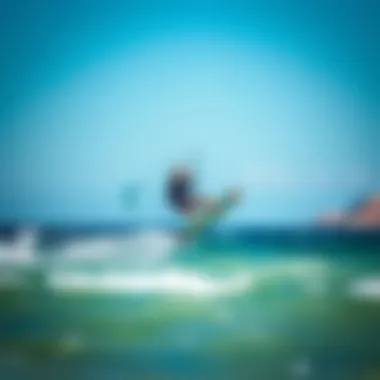
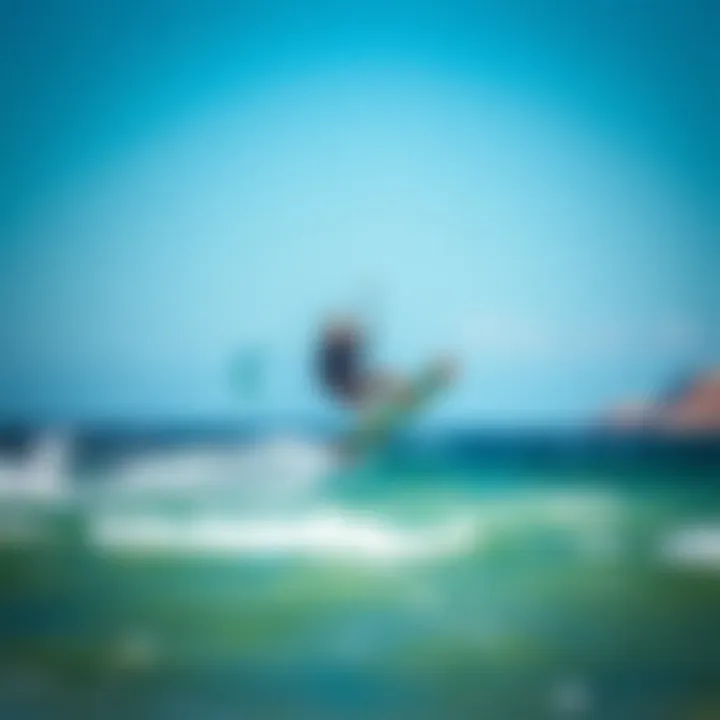
Intro
Kitesurfing has taken the Algarve by storm, transforming the coastline into a vibrant hub for water sports lovers. From beginners testing the waters to seasoned pros catching the perfect wave, the Algarve offers a unique blend of stunning vistas and reliable winds. This guide peels back the layers of kitesurfing in this beautiful region, providing a detailed look into various aspects that matter; be it wind conditions, prime locations, essential gear, or even safety guidelines.
With the right knowledge, whether you're strapping on your first board or perfecting your tricks, you can truly elevate your kitesurfing experience in Algarve. This comprehensive exploration aims at shedding light on what you need to embark on your kitesurfing adventure. Each section digs into essential insights, paired with practical tips, ensuring you're equipped for every gust and wave that comes your way.
As you navigate through this guide, you’ll discover invaluable recommendations, safety protocols, and sustainable practices, all intertwined with the cultural richness that Algarve brings to the table. So, grab your gear and let’s dive into the thrilling world of kitesurfing!
The Allure of Algarve
Algarve, a sun-soaked paradise in southern Portugal, has captured the hearts of kitesurfers and beach lovers alike. Its stunning coastlines, warm waters, and vibrant communities come together to form a unique backdrop perfect for both seasoned riders and those just starting out. With its coastal charm and hospitable locals, the Algarve isn't merely a place—it's an experience.
One of the standout features of this region is its geographical diversity. Stretching from the rugged cliffs of Sagres in the west to the soft, rolling dunes of the east, the coastline offers an array of kitesurfing spots that cater to various skill levels. Each beach tells its own tale, drawing adventurers looking for thrills and relaxation alike.
Geographical Overview
The Algarve is blessed with an extensive coastline that runs about 155 kilometers, filled with a mix of sandy beaches, hidden coves, and towering cliffs. Beaches like Praia da Rocha and Praia de Faro allure bystanders and kitesurfers alike with their stunning vistas. While both locations offer strong winds, each presents different challenges and environments for riders.
More importantly, the diverse terrain means local wind conditions vary considerably; this is a boon for those who crave different riding experiences. On some days, the winds howl, perfect for advanced maneuvers, while other days greet you with gentle breezes suitable even for the fainthearted. Here, the terrain itself becomes your canvas; surfers quickly learn to read the landscape and its moods.
Climate and Wind Patterns
The climate of the Algarve plays a significant role in its appeal as a kitesurfing haven. Typically, the region enjoys a Mediterranean climate characterized by hot summers and mild winters. However, it's the consistent wind patterns that really put the Algarve on the kitesurfing map.
During the summer months, from May to September, the trade winds blow predominantly from the northwest. This reliable wind provides ideal kitesurfing conditions with steady gusts, often reaching 17 to 25 knots. A typical day might see light winds in the morning, building up throughout the afternoon, handing seasoned riders a playground for their tricks while newcomers gradually gain confidence.
It's essential for riders to pay attention to local forecasts and the unique behaviors of the wind associated with specific beaches. Winds can whip up quickly, and those who are well-informed stand to benefit from optimal wind conditions—a vital consideration for any kitesurfer.
"The winds of the Algarve don't just move air; they create a symphony for kitesurfers who are eager to dance on the waves."
Kitesurfing Fundamentals
Understanding the fundamentals of kitesurfing is essential for anyone looking to take part in this exhilarating sport. It is not just about riding the waves but involves a blend of technical skills, safety knowledge, and respect for the environment. The beauty of kitesurfing lies in its simplicity—yet there is complex interplay of various elements that one must grasp to truly enjoy the experience. Knowing how to manage your equipment, understanding the wind, and being aware of your surroundings can dramatically improve your proficiency and safety on the water.
Understanding the Sport
Kitesurfing, in essence, is about harnessing the power of the wind to propel oneself across the water, all while standing on a board. The sport has roots that catalog their origins to several water sports and has evolved significantly over the years. At its core, kitesurfing is a dance between the rider, the kite, and the ocean. Achieving a balance here is not only exhilarating but also opens up a world of freedom.
For novices, the thrill of taking your first flight over water isn’t purely about the adrenaline rush; it's about connecting with nature in a way few activities allow. The freedom to ride the waves, while being pulled by a kite, creates a unique sense of liberation. With a solid understanding of how the sport operates, including wind mechanics and board control, one can start to experience that wonderful flow.
Additionally, kitesurfing comprises various styles, from freestyle and wave riding to racing. Each style requires a different approach and technique. For instance, freestyle involves jumps and tricks, while wave riding focuses on harnessing wind to surf waves efficiently. Understanding these styles is critical as they guide what type of gear you may choose and dictate the conditions best suited for each.
Key Techniques for Beginners
As you transition from understanding to practice, grasping the key techniques becomes crucial.
- Setting Up Your Gear: A paramount consideration for beginners. Familiarize yourself with your kite and board. Understand how to attach the lines correctly and how to launch and land the kite safely. Proper setup ensures a smooth ride.
- Controlling the Kite: Master the art of kite control. By manipulating the bar and lines, you dictate the kite's position in the wind. A beginner’s key focus is learning to fly the kite in the 'neutral zone'—this is the area above your head where the kite is still but can be moved quickly for power.
- Body Positioning: How you position your body on the board while riding directly affects your balance and speed. Keeping your knees bent and your weight centered will help maintain control, especially when navigating waves or gusty winds.
- Riding Techniques: Start off with the basics, such as riding upwind. This involves angling the board and using the kite’s power to offset the drift caused by wind or water. With practice, you’ll soon find yourself going upstream like a salmon.
- Falling Safely: Everyone falls; it's part and parcel of learning. Knowing how to fall correctly reduces the chance of injury. Focus on letting the kite above you hang, sleekly release the lines to the back, and don’t let the impact of falling go through your wrists.
As a beginner, it’s easy to feel overwhelmed, but with time and patience, these initial techniques will become second nature. Remember to keep your ego in check; adjusting your abilities and acknowledging the learning curve is part of the game.
"Practice makes perfect, but it also builds confidence in a sport where understanding your gear and surroundings is as vital as mastering tricks."
Best Kitesurfing Locations in Algarve
The Algarve is a treasure trove for kitesurfers, boasting diverse spots that cater to all skill levels. Each location has its unique charm, characterized by gentle winds, stunning backdrops, and welcoming local communities. This section delves into the best kitesurfing locations in Algarve, emphasizing key elements, benefits, and considerations to ensure an exhilarating experience on the water.
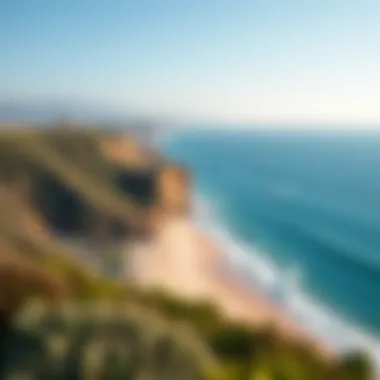
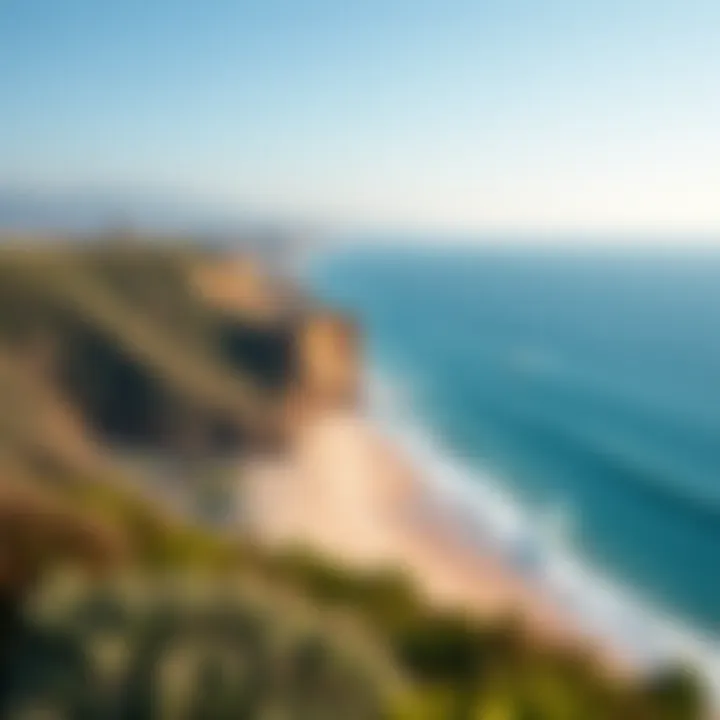
Lagos: A Premier Spot
Lagos stands tall as a premier kitesurfing hub in the Algarve. Located on the southwestern coast, this gem blends picturesque landscapes with user-friendly wind conditions. The coastline is dotted with reliable launch spots where beginners and advanced riders can harness the powerful winds that sweep off the Atlantic.
Accessibility is another factor that makes Lagos appealing. Its proximity to various schools and rental shops makes it easy for newcomers to get equipped without a hitch. Moreover, the vibrant nightlife and stunning beaches offer a perfect blend of sport and leisure. Riders often say that the atmosphere here is incredibly motivating, making it hard to leave the water.
- Key Highlights of Lagos:
- Consistent wind patterns
- A tight-knit kitesurfing community
- Access to professional instructors
Alvor: A Hidden Gem
If you’re looking for a quieter yet equally breathtaking kitesurfing spot, Alvor should be on your radar. Tucked away from the bustling tourist areas, this village features a charming lagoon where flat waters and moderate winds create ideal conditions for kitesurfers.
Alvor’s appealing scenery, alongside its well-maintained facilities, makes it easy for riders of all levels to practice their skills. Long stretches of sand offer plenty of room for setup, and the warmth of local hospitality is palpable. Many who visit Alvor rave about its relaxed vibe, emphasizing how it allows them to focus entirely on improving their kitesurfing skills.
- Characteristics of Alvor:
- Flat water - perfect for practicing tricks
- Breathtaking sunsets that draw kitesurfers back time and again
- Friendly locals who often share valuable tips
Carrapateira: Nature’s Playground
Carrapateira stands as an emblem of nature’s beauty and adventure. With rugged cliffs and expansive sandy beaches, this location offers kitesurfers a unique mix of wild landscapes and competitive conditions. The winds here are a bit more challenging, making it better suited for intermediate to advanced riders looking for a thrill.
Kitesurfers here often appreciate the blend of ocean and desert-like surroundings, as it creates a varied environment that is both stunning and invigorating. The nearby surf breaks also mean that wind and swell work in unison, creating exciting conditions for those seeking to really push their limits.
- What Makes Carrapateira Special:
- Rugged coastlines with breathtaking views
- Challenging wind conditions for seasoned riders
- Opportunities for other water sports nearby
In summary, the Algarve region's best kitesurfing locations provide a perfect mix of conditions and experiences, whether you're just starting or looking to hone your skills. From Lagos' lively beach scene to Alvor's serene atmosphere and Carrapateira's wild beauty, there's a spot for every kitesurfer to enjoy.
Gear Required for Kitesurfing
When it comes to kitesurfing, having the right gear is just as crucial as mastering the techniques. It can be the difference between riding the waves smoothly and wrestling with the wind like a fish out of water. Whether you’re a rookie eager to hit the water or a seasoned rider aiming for that next big thrill, understanding the essentials of kitesurfing gear is key to a successful experience.
Choosing the Right Kite
Selecting the perfect kite represents a significant investment in your kitesurfing journey. Kites come in various sizes, shapes, and designs. Notably, the type you choose depends on your skill level, local wind conditions, and the kind of riding you aim to do.
- Sizes: Kites typically range in size from about 3 to 19 square meters. A smaller kite is ideal for strong winds, while a larger one works better in lighter conditions. For first-timers, a medium-sized kite—around 10 to 12 square meters—often serves as a sweet spot.
- Types: Your main options are inflatable kites or foil kites. Inflatable kites offer stability, making them popular among beginners. Foil kites, on the other hand, can be more efficient and are great for experienced riders looking to capitalize on light winds.
When making your choice, consider your body weight too. A heavier rider might need a larger kite for the same wind conditions as a lighter rider.
Selecting a Board
The board you choose can deeply influence the way you experience kitesurfing. Varying in styles and designs, the right board helps with balance and maneuverability, letting you ride comfortably and confidently.
- Types of Boards: The two main categories are twin-tip boards and directional boards. Twin-tip boards are versatile, allowing riders to switch directions effortlessly and are ideal for most conditions. Directional boards are typically longer and shaped for downwind riding, making them excellent for surf-style kitesurfing.
- Dimensions and Flexibility: When picking a board, you should consider its width and length. Wider boards provide better support for beginners and are easier to control. As for flexibility, more flex helps absorb choppy water conditions, resulting in a smoother ride. However, stiffer boards offer better performance for jumps and tricks.
Safety Equipment
Prioritizing safety in kitesurfing cannot be stressed enough. While the thrill of riding the waves is exhilarating, adequate safety gear is essential for a secure experience.
- Harness: A good harness secures you to the kite, allowing you to ride hands-free while reducing fatigue. There are seat harnesses that sit low on your hips, and waist harnesses which allow for more freedom of movement. Your choice depends on comfort and riding style.
- Helmet: This might not seem like a glam accessory, but a helmet can stave off serious injuries during unexpected falls or crashes. When you’re navigating through dynamic winds and waves, having your head protected makes all the difference.
- Impact Vest: Wearing an impact vest helps protect your torso from any sudden impacts or falls. Some vests even provide flotation assistance, which is beneficial for beginners still finding their way.
- Leash: A leash connects you to your board, preventing it from wandering off every time you wipe out. It’s a small, simple piece of gear, but essential for your safety and to keep your equipment from getting lost.
Always remember, good gear is an investment in your safety and enjoyment on the water. Picking the right components tailored to your needs ensures a gratifying experience as you carve your path through the waves.
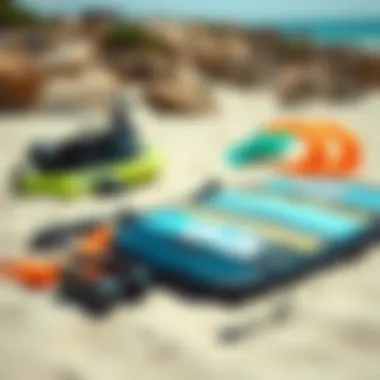
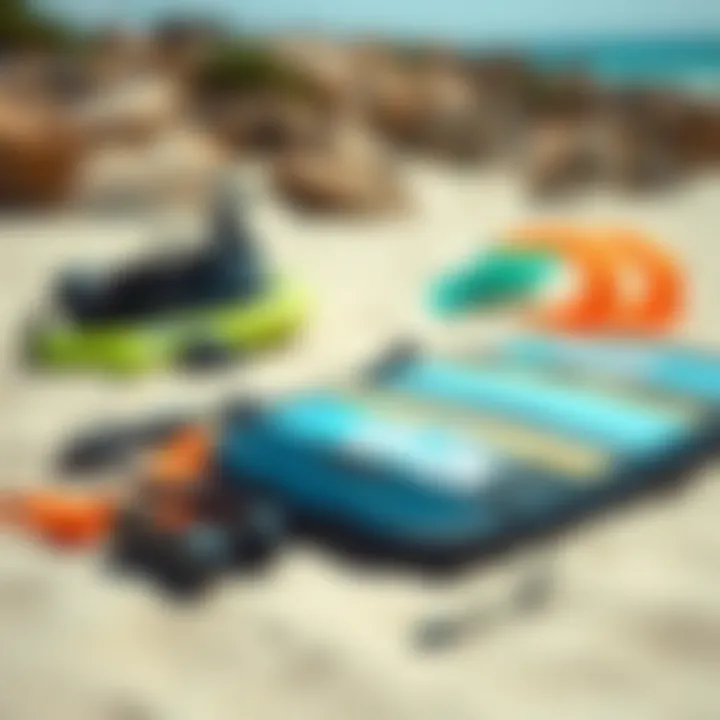
For more in-depth information on kitesurfing gear, you can check out Wikipedia or join discussions on Reddit where enthusiasts share their experiences.
Safety Protocols in Kitesurfing
Kitesurfing, while exhilarating, can carry certain risks that necessitate thorough safety protocols. Each kiteboarder, whether a novice or a seasoned pro, must comprehend these protocols to ensure their safety as well as the safety of others around them. The multifaceted nature of kitesurfing requires awareness and preparedness to minimize accidents and enhance the overall experience on the water. This section is focused on understanding the risks involved, essential safety practices to adopt, and what to do in case of an emergency.
Understanding Risks
Kitesurfing presents diverse hazards that can arise from equipment failures, environmental conditions, or even the actions of fellow kitesurfers. The wind can be fickle; sudden gusts or shifts in wind direction can lead to difficult situations. Some key risks include:
- Equipment Failure: Kites and boards can malfunction. Regular equipment checks and maintenance can prevent accidents.
- Environmental Conditions: Understanding local currents, tides, and wind patterns is vital for safe navigation.
- Collisions: With multiple riders in the water, the risk of colliding with another kite or board increases, especially in crowded areas.
Before heading out, always consider the state of the weather, your surroundings, and your skill level. A seasoned kiteboarder once shared, "You can't control the wind, but you can control how you respond to it."
Essential Safety Practices
Adhering to specific safety practices can significantly reduce the likelihood of accidents and injuries. Here are some fundamental practices that all kitesurfers should incorporate into their routine:
- Wear Appropriate Gear: Always wear a life jacket and a helmet. Additionally, protective wetsuits can help prevent injuries from falls.
- Buddy System: Kitesurfing in pairs or groups is advisable. It ensures that someone is nearby to assist in case of an emergency.
- Pre-flight Checks: Before launching your kite, inspect your gear thoroughly. Ensure all lines are connected, knots are secure, and that there’s no damage to the kite or board.
- Know Your Limits: Don't attempt tricks or maneuvers beyond your skill level. Know when to call it a day if conditions become challenging.
Following these practices not only safeguards your own well-being but also fosters a more secure environment for all kiteboarders.
Emergency Protocols
Even with the best safety practices in place, emergencies can still occur. Having a plan can make all the difference. Here are essential emergency protocols to bear in mind:
- Know How to Signal for Help: Familiarize yourself with distress signals that can be easily recognized by other riders or observers, such as waving arms or using a whistle.
- Plan for Equipment Failure: If your kite loses power, learn how to perform a controlled landing. It’s crucial to practice this skill.
- Understand Water Evacuation Procedures: Know the safest route to shore and how to assist another rider who might be in distress, even if it involves detaching your own gear to reach them.
- Keep Emergency Contacts Ready: Always have the contact information of local rescue services or kitesurfing instructors at hand.
"Preparedness is like a life jacket; it may not help you avoid the storm, but it can keep you afloat."
In essence, safety protocols in kitesurfing serve a dual purpose: protecting yourself while respecting fellow riders. By embracing these practices, you contribute to a safer and more enjoyable kitesurfing community in Algarve.
Environmental Considerations
Understanding the environmental responsibilities that come with kitesurfing is essential for preserving the stunning beauty of the Algarve region. This section highlights various aspects of environmental considerations, emphasizing sustainable practices, and protecting local ecosystems.
Sustainable Kitesurfing Practices
When it comes to kitesurfing, enthusiasts should prioritize practices that minimize their impact on the environment. Below are some essential sustainable practices:
- Choose Eco-Friendly Gear: Select kites and boards made from sustainable materials. Brands like Naish or Duotone are starting to focus on more environmentally friendly manufacturing processes.
- Respect Natural Areas: Always launch and land your kite in designated areas to avoid disturbng wildlife and local plants. Stick to marked paths when walking to launch sites.
- Practice Leave No Trace Principles: Take all your rubbish back with you, including wrappers and broken equipment. Leaving the beach clean helps preserve its beauty for others.
- Support Local Businesses: Engage with kitesurfing schools and shops that implement eco-friendly practices. This not only aids in the local economy but also fosters a culture of sustainability within the community.
Adopting these practices not only helps to protect the natural landscape but also sets a strong example for fellow kitesurfers.
Protecting Local Ecosystems
The Algarve coastline is home to unique ecosystems that deserve close attention. Here are some points to consider:
- Flora & Fauna: The region is rich in biodiversity, including endangered species that inhabit coastal areas. Kitesurfers should be aware of their surroundings and make an effort to avoid disturbing nesting sites or feeding areas.
- Dune Preservation: Coastal sand dunes play a crucial role in preventing erosion and maintaining the ecological balance. It’s important to stay clear of sensitive dune areas when accessing beaches, to prevent degradation.
- Water Quality: Polluting water bodies can endanger marine life and the health of the local ecosystem. Economic activities such as littering or oil spills from kitesurfing equipment should be avoided at all costs.
A small action, like cleaning up after oneself, can contribute to preserving the exceptional ecosystems of the Algarve.
To wrap it all up, kitesurfers hold a pivotal role in ensuring that Algarve’s natural beauty and ecosystems remain intact for future generations. Being mindful of our impact, supporting sustainable practices, and protecting local habitats are all key to enjoying this sport in a responsible manner. For further reading on environmental practices, consider visiting Wikipedia on Sustainability and other environmental resources.
Kitesurfing Communities and Events
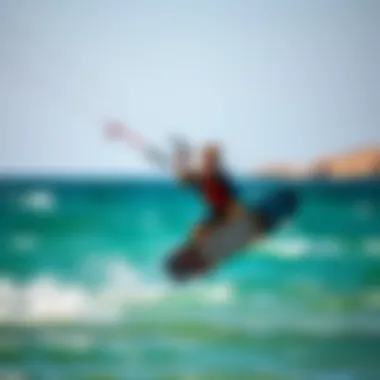
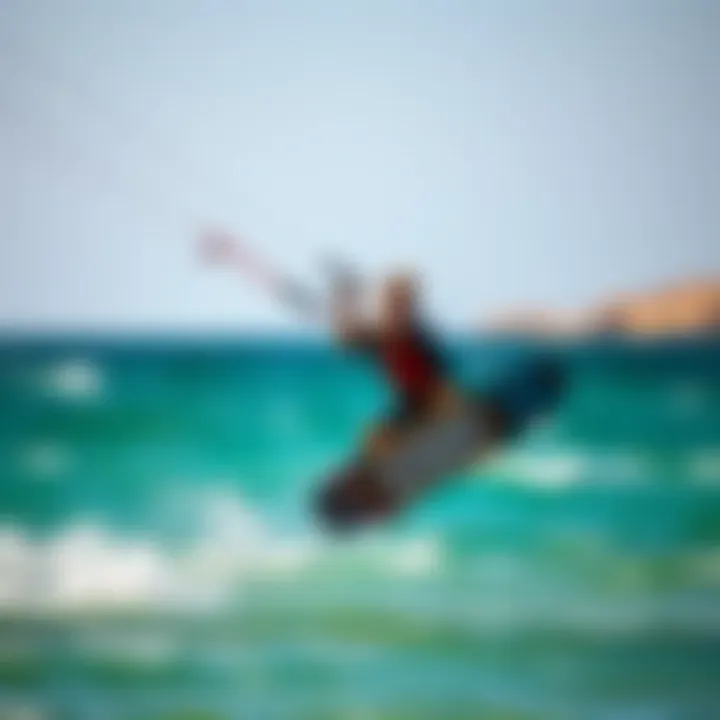
Kitesurfing is not just a sport; it’s a lifestyle, and one that flourishes within the framework of community and shared experiences. In the Algarve, this strong sense of belonging among kitesurfers creates an environment that encourages skill development, safety awareness, and social interaction. Communities and events play integral roles in fostering connections, sharing knowledge, and enhancing the overall kitesurfing experience.
Joining Local Clubs
Engaging with local kitesurfing clubs is one of the best ways to immerse oneself in the sport. Clubs often serve as the heart of kitesurfing communities, offering support and resources for both newcomers and seasoned riders. Being a member can present several advantages:
- Networking Opportunities: Connecting with fellow enthusiasts can lead to lasting friendships and partnerships, whether for shared outings or group lessons.
- Access to Resources: Clubs often provide access to a wealth of information about gear, local conditions, and tips that members might not find online.
- Skill Development: Many clubs organize workshops and training sessions led by experienced riders. This hands-on learning can help you refine your techniques and make progress more quickly.
- Community Events: Membership often means invitations to various events, such as beach clean-ups, competitions, and social gatherings that strengthen community ties.
Joining a local club typically involves an annual fee, but the benefits far outweigh the costs. With a little bit of research, riders can find a club that fits their vibe and goals.
Upcoming Competitions
Kitesurfing competitions bring excitement and camaraderie to the community, offering athletes a chance to showcase their skills while also drawing spectators who share an enthusiasm for the sport. The Algarve hosts a variety of events throughout the year, appealing to all levels of kitesurfers. Some key points to consider regarding competitions:
- Skill Showcase: Competitions allow riders to demonstrate their skills and creativity. Participating can be an exhilarating way to push personal limits.
- Community Celebration: Events usually gather people from all walks of life, providing an opportunity to cheer on fellow kitesurfers while making new connections.
- Sponsorships and Prizes: Competitions can attract sponsors, offering opportunities for aspiring athletes to gain exposure and even win prizes that can help them further their passion.
Keeping an eye on the kitesurfing calendar can ensure you don’t miss out on these vibrant events. Follow local clubs and social media channels for updates on competition dates, locations, and details regarding participation.
"Joining a kitesurfing club and participating in events is like catching the perfect wind—essential for growth and adventure!"
Training and Lessons
Kitesurfing in Algarve is not just about adrenaline and waves; it's about honing skills and understanding the nuances of the sport. The right training can make the difference between a thrilling experience and a dangerous one. In this section, we explore why training and lessons are crucial for both beginners and seasoned riders.
Finding Certified Instructors
When stepping into the world of kitesurfing, the guidance of certified instructors is invaluable. Taking lessons from knowledgeable teachers can advance your skills rapidly. These professionals not only possess the technical skills to teach, but they also have practical wisdom drawn from years on the water. Whether you're just starting or wishing to refine your technique, professional guidance can prevent you from developing bad habits that are tough to shake off later.
A few points to consider while looking for certified instructors:
- Certification Bodies: Look for instructors certified by recognized organizations such as the International Kiteboarding Organization (IKO) or the British Kitesurfing Association (BKSA). This ensures they meet specific standards.
- Experience: Inquire about the instructor’s experience. Those who've spent more time on the water typically have a wealth of information to share on conditions, equipment choices, and local spots.
- Reviews and Referrals: Read reviews or ask current and former students about their experiences. Personal referrals can provide insight that online ratings sometimes miss.
- Accessibility: Consider locations and scheduling. Find instructors who provide lessons near your preferred kitesurfing area in Algarve, like Lagos or Alvor, and can accommodate your schedule.
In short, finding the right instructor can transform your kitesurfing journey. Building a solid foundation with proper guidance enhances not only safety but also enjoyment of the sport.
Types of Courses Available
Once you've found a certified instructor, the next step is deciding what type of course suits your needs. Courses vary by skill level, duration, and focus, catering to all types of kitesurfers.
- Beginner Courses: These are tailored for those new to kitesurfing. Expect hands-on training in safety, kite control, and basic riding skills. Courses typically last a few days, ensuring you are ready for the water in no time.
- Intermediate Courses: Designed for those who can ride but wish to improve their technique. Topics can include jumping, turning, and dealing with different wind conditions. Here, you'll refine skills to increase your confidence.
- Advanced Courses: For experienced kitesurfers, these courses focus on complex maneuvers, tricks, and handling challenging conditions. Expect a coach who will push your limits while ensuring safety.
- Private Lessons: If you prefer one-on-one learning, private lessons offer personalized coaching tailored to your specific needs, allowing you to progress at your own pace.
- Group Lessons: Ideal for friends or families, group lessons can provide a supportive environment, helping you learn alongside others. These also tend to be more cost-effective.
Choosing the right course can significantly impact your progression, making you more proficient while enjoying the stunning scenery of Algarve. Get ready to ride the waves safely and confidently.
End: The Future of Kitesurfing in Algarve
As we look towards the horizon of kitesurfing in the Algarve, it becomes clear that the future holds a world of potential. This region, with its stunning coastal landscapes and favorable wind conditions, is poised to sustain and even elevate its status as a kitesurfing hotspot.
One of the paramount elements to consider is the advent of technology in kitesurfing gear and instruction. New materials in the construction of kites and boards facilitate enhanced performance, making it easier for both beginners and more seasoned kiteboarders to enjoy their sessions.
Moreover, there’s a noticeable shift towards sustainability within the kitesurfing community. With awareness surrounding environmental issues growing, kitesurfers are increasingly adopting eco-friendly practices, ensuring that the beautiful locales remain unharmed. This includes responsible waste management at beaches and supporting local conservation initiatives.
"As kitesurfing continues to develop, the balance between enjoying the waves and protecting our environment must remain a priority."
Emerging Trends
Expect to see rise of community-driven events and competitions that elevate not just the experience for participants but also for spectators. Events such as local kitesurfing festivals not only bring enthusiasts together but also create a buzz around the sport, attracting newcomers to try their hand at the sport.
In addition, the integration of technology into kitesurfing experience via mobile apps and online communities offers tailored advice, tracking, and safety tips. Such tools can greatly enhance one’s kitesurfing journey, fostering a sense of connectivity among riders across skill levels.
Continued Growth of the Sport
It's undeniable that kitesurfing is on an upward trajectory, particularly in the Algarve. The growing number of schools and instructors in the region speaks to an increasing interest among individuals wanting to learn. The introduction of more structured training programs will continue to attract those eager to join this exhilarating sport. Furthermore, as social media platforms act as powerful instruments for sharing experiences, we expect even more individuals to be inspired to take up kitesurfing.
The Algarve's future as a kitesurfing destination hinges not just on natural attributes but also on the community's commitment to growth and sustainability, ensuring that everyone can enjoy the breathtaking experiences it offers for generations to come.















